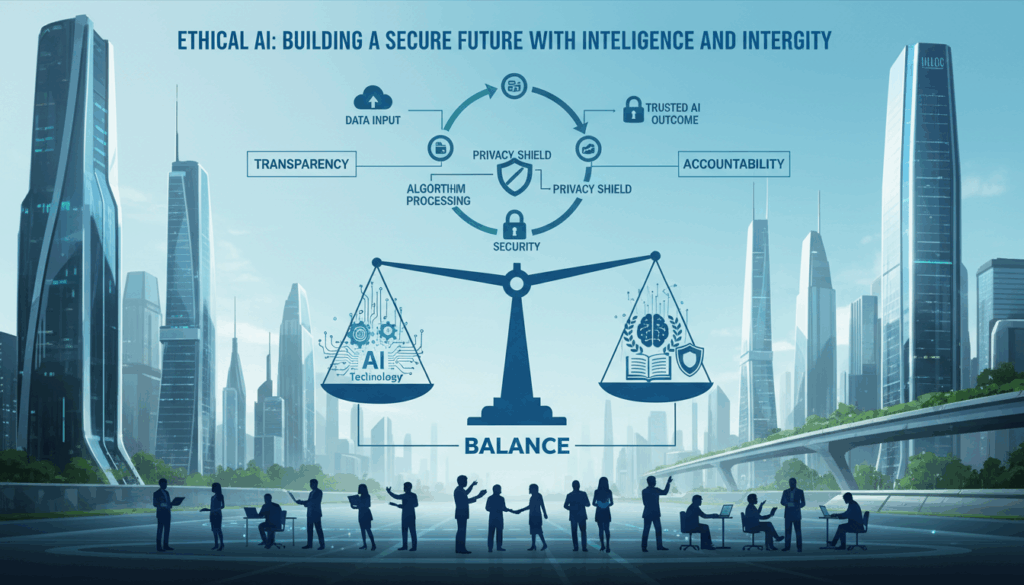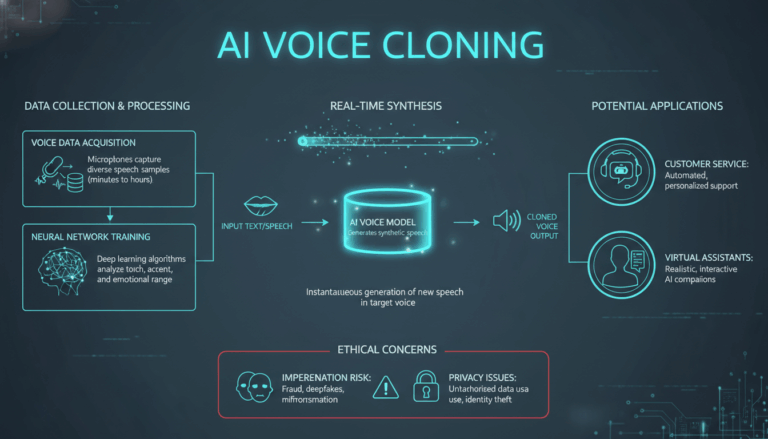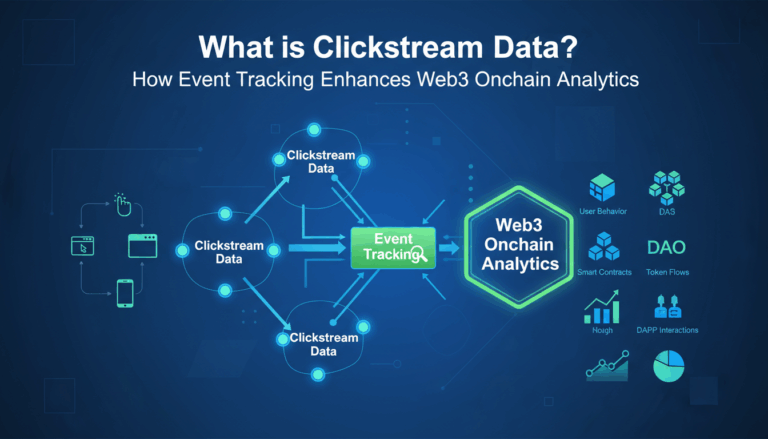Understanding Ethical AI: Definitions and Core Principles
Ethical AI refers to the development and deployment of artificial intelligence systems that adhere to moral principles and ethical considerations. In recent years, as AI technologies become more pervasive in various aspects of society, the importance of ensuring these systems operate ethically has gained significant attention from researchers, policymakers, and developers alike.
Central to understanding ethical AI is recognizing its foundational definitions and principles, which guide its implementation and evaluation. At its core, ethical AI aims to align AI technologies with human values and societal norms while minimizing potential harms and maximizing benefits.
One primary aspect of ethical AI is transparency. Transparency ensures that AI systems are understandable and explainable to their users and stakeholders. Models should be engineered to make their decision-making processes clear, which is crucial for trust and accountability. For instance, when AI is used in critical areas such as healthcare or criminal justice, stakeholders must know how decisions are made to review or contest them if necessary.
Fairness is another critical principle, focused on eliminating biases within AI systems. AI algorithms trained on skewed data can perpetuate existing biases, leading to unfair outcomes. Therefore, ethical AI requires ongoing efforts to detect, measure, and mitigate bias, ensuring that AI applications provide equitable treatment regardless of gender, race, or other protected attributes. An example can be found in hiring algorithms, where it’s crucial to maintain objectivity to prevent discriminatory practices.
Moreover, accountability is a key factor in ethical AI, demanding that developers, companies, and institutions be held responsible for the AI systems they create and deploy. This accountability extends to potential unintended consequences, requiring clear frameworks and guidelines to address any negative impacts that might arise. An effective strategy might include the formulation of accountability matrices that outline responsibilities at every stage of AI development and utilization.
Privacy and security are also pivotal. Ethical AI must ensure that users’ data is handled with the highest standards of confidentiality and protection against misuse. This involves implementing robust encryption methods, establishing stringent data governance policies, and routinely assessing vulnerabilities within AI systems. Protecting individual privacy not only adheres to ethical guidelines but also strengthens user trust.
Autonomy must be respected in the design of AI systems, balancing between offering advanced automated solutions and allowing for human intervention where necessary. Systems should be designed to support, not replace, human decision-making, ensuring humans remain in control. A practical example is autonomous vehicles, which should include features allowing human intervention during emergencies.
In conclusion, understanding and implementing ethical AI principles is a multifaceted endeavor requiring collaboration across multiple sectors and disciplines. By rigorously adhering to transparency, fairness, accountability, privacy, security, and autonomy, society can harness AI’s potential while safeguarding against its risks. Each principle contributes to a framework that not only guides ethical AI practices but also fosters public trust and promotes the responsible innovation of intelligent technologies.
The Role of Ethical AI in Enhancing Cybersecurity Measures
Artificial Intelligence (AI) plays a profound role in cybersecurity, providing capabilities that surpass traditional methods in identifying threats, detecting anomalies, and managing complex security events. Integrating ethical AI principles into cybersecurity is crucial for robust security frameworks while ensuring respect for legal, moral, and social responsibilities.
The dynamic nature of cyber threats requires AI systems that can adapt and respond to new types of attacks. Ethical AI can enhance cybersecurity by ensuring these adaptive systems are transparent, non-biased, accountable, and secure.
AI’s transparency is vital in cybersecurity to maintain trust among users and organizations. Transparent AI models provide insights into the decision-making processes of threat detection systems. For instance, when AI identifies a potential threat, transparency allows cybersecurity teams to understand the reasoning behind the detection, enabling more informed responses and making it easier to audit and improve AI algorithms continually.
Moreover, the fairness principle mandates that AI systems treat all users equally without bias, which is particularly important in cybersecurity. Bias in cybersecurity tools could inadvertently prioritize or ignore certain threats based on skewed learning from historical data. By focusing on fairness, ethical AI ensures equitable threat detection and response, preventing discrimination against any particular user groups or services. This might involve consistently updating datasets used for AI training to include diverse and representative samples of threat data.
Accountability is another key element where ethical AI strengthens cybersecurity measures. Developers and organizations must be accountable for their AI systems’ outputs and impacts. This accountability ensures that organizations implement stringent security measures and provide a clear path for rectification if the AI fails or makes incorrect assessments. Creating accountability frameworks, where responsibilities are clearly outlined for various stakeholders involved in the AI lifecycle, enhances the reliability of AI-based cybersecurity solutions.
Privacy and security are inherently linked to cybersecurity, underscoring the need for ethical AI to handle sensitive data responsibly. AI-powered security systems process vast amounts of user data, and ethical guidelines demand that this data is handled with utmost confidentiality. This is achieved through advanced encryption techniques, access controls, and continuous monitoring of AI models to prevent data breaches. For instance, implementing encryption protocols that secure data both at rest and in transit can help protect user privacy even as AI systems actively analyze data to detect threats.
Ethical AI also enhances cybersecurity through real-time threat detection while maintaining user autonomy. AI can process data at speeds unattainable by human analysts, identifying patterns and anomalies in network behavior that suggest potential breaches. However, it is crucial that such systems allow for human oversight and intervention, thus respecting user autonomy. Features enabling human operators to override AI decisions are essential, ensuring human judgment complements machine efficiency, especially in critical decision-making scenarios.
Incorporating ethical AI into cybersecurity strategies not only strengthens defenses against cyber threats but also builds trust with consumers and stakeholders. As AI continues to evolve, embedding ethical considerations into AI design and deployment will help organizations create resilient cybersecurity frameworks that protect both digital infrastructure and the rights and privacy of individuals.
Addressing Bias and Fairness in AI Systems
In addressing bias and fairness in AI systems, the primary challenge is ensuring that algorithms make decisions free from inherent prejudices. This involves a multi-faceted approach, beginning with understanding how biases are often introduced. AI systems are typically trained using datasets that reflect historical data, which may inadvertently carry the biases of the human decisions they encode.
To tackle these issues, it’s crucial to adopt strategies at every stage of AI development. The first step is meticulous data collection and preparation. Data scientists need to curate datasets carefully, ensuring they are representative of diverse user groups. A well-rounded dataset includes data points from all relevant demographics to avoid over-representation of any single group, which could skew results.
Once data is collected, it’s essential to perform bias detection and mitigation. Tools and frameworks like Fairness Indicators or IBM’s AI Fairness 360 can be utilized to assess how training datasets and algorithms perform across different demographic groups. These tools help in identifying disparities in the treatment or outcomes for specific subgroups, allowing developers to adjust models accordingly.
Incorporating fairness into AI systems also requires continuous evaluation and adaptation. Bias audits and fairness testing should be integral parts of the development cycle, ensuring AI models remain equitable as they evolve. During these audits, specific performance metrics can be examined for disparities across different user groups. Techniques such as adjusting decision thresholds, re-weighting the training data, or redesigning model architecture can help address identified biases.
Furthermore, transparency and explainability are vital for ensuring fairness. AI systems should be designed to offer insights into their decision-making processes. By making AI decisions more explainable, stakeholders and end-users can better understand and trust these systems, knowing that fairness has been taken into account. Explainable AI (XAI) frameworks can be employed here to shed light on how certain decisions are made, allowing all parties involved to identify and rectify unfair biases.
Another approach is implementing robust governance frameworks that incorporate ethical guidelines into AI development. These frameworks can outline clear accountability structures and decision-making processes, ensuring that fairness is a top priority. By setting these guidelines, organizations can systematically address biases, with oversight mechanisms to ensure compliance and promote continuous improvement.
Engaging cross-disciplinary teams in AI projects is also valuable. Diverse perspectives, from social scientists to ethicists, can provide insights into potential biases that technical teams might overlook. This interdisciplinary approach enriches AI development with a myriad of viewpoints, significantly bolstering efforts to design more equitable systems.
Ultimately, promoting fairness in AI systems demands ongoing commitment and vigilance from all stakeholders. By implementing comprehensive strategies from data collection to governance, organizations can create AI systems that faithfully serve all individuals while avoiding the pitfalls of bias and discrimination. This commitment not only enhances the societal acceptance of AI technologies but also ensures they are equitable and just, contributing to a more ethically mindful technological future.
Regulatory Frameworks and Standards for Ethical AI Implementation
Regulatory frameworks and standards play a crucial role in guiding the ethical implementation of AI technologies. These frameworks ensure that AI systems align with societal values, legal requirements, and ethical principles such as fairness, accountability, transparency, and privacy. Given the global nature of AI deployment across numerous domains, establishing standardized guidelines is essential for consistent ethical practices.
One of the most influential regulatory frameworks is the EU’s General Data Protection Regulation (GDPR). While primarily focused on data protection and privacy, GDPR outlines principles relevant to AI, such as data minimization, individual consent, and the right to explanation. These principles compel AI systems to be transparent and justify their decision-making processes, thereby reinforcing user trust.
Additionally, the European Union has proposed the Artificial Intelligence Act, which seeks to classify AI applications according to levels of risk. This risk-based approach mandates stricter regulations for high-risk AI systems, such as those used in critical infrastructure, law enforcement, and healthcare. The act proposes requirements for transparency, human oversight, and accountability, aiming to ensure that AI is secure, trustworthy, and respects fundamental rights.
In the United States, efforts to establish ethical AI frameworks have been spearheaded by organizations like the National Institute of Standards and Technology (NIST). NIST’s AI Risk Management Framework focuses on ensuring AI systems are trustworthy, promoting practices that address biases, enhance interpretability, and ensure robustness. This framework is designed to be flexible and emphasize international cooperation in developing cohesive standards.
Moreover, ISO/IEC JTC 1/SC 42, an international standards committee, is actively working on standards for AI that include aspects like data quality, bias, and governance. These efforts aim to create a harmonized approach that organizations can adopt to ensure ethical AI. By focusing on international standardization, ISO provides a platform for global companies to implement consistent ethical practices across their operations.
Beyond governmental regulations, industry groups and collaborations such as the Partnership on AI bring together experts from academia, civil society, industry, and policy to formulate best practices and ethical guidelines. This collaborative approach fosters a holistic understanding of ethical AI challenges and encourages diverse solutions.
Implementation of these frameworks often involves a multidisciplinary approach, ensuring diverse stakeholder input. This inclusivity is essential for comprehensive governance structures, allowing organizations to address potential ethical issues from multiple perspectives. Companies may adopt measures such as ethical review boards, ongoing compliance monitoring, and stakeholder engagement sessions.
Organizations seeking compliance with ethical AI regulations can benefit from engaging with external audits and certifications. These audits assess adherence to ethical guidelines and provide feedback on necessary improvements, helping companies maintain up-to-date compliance with evolving standards.
Overall, regulatory frameworks are instrumental in navigating the complexities of ethical AI. By adhering to these guidelines, organizations can ensure their AI systems contribute positively to society, enhance trust, and remain resilient amidst technological advancements.
Best Practices for Developing and Deploying Ethical AI Solutions
Developing and deploying ethical AI solutions require a strategic approach that integrates moral principles at each stage of the AI lifecycle. To achieve this, organizations must implement best practices that ensure systems are aligned with ethical standards, are robust against potential bias, and respect privacy and transparency.
Engage in collaborative design processes involving diverse stakeholders from the outset. Involving ethicists, domain experts, and community representatives can bring varied perspectives that enrich the ethical considerations of an AI project. By incorporating feedback from these stakeholders early, developers can better align AI systems with societal values and address potential ethical dilemmas.
Establishing a clear ethical framework within the organization is crucial. This involves setting up dedicated ethics committees or review boards that consistently evaluate AI projects against ethical criteria. These bodies should be empowered to oversee AI development, providing guidelines and conducting regular audits to ensure compliance with ethical norms.
Data governance plays a pivotal role in ethical AI development. Utilize data that is representative, diverse, and free of biases that could skew AI outcomes. Employ advanced techniques for data preprocessing, such as data anonymization, augmentation, and bias detection tools, to ensure that training datasets adequately reflect the populations the AI will serve. Regularly update and iterate on training data to adapt to changing societal norms and prevent biases from perpetuating over time.
Transparency and explainability must be prioritized to enable trust and accountability. Develop AI systems that are interpretable by design, allowing end-users and stakeholders to understand the decision-making processes. Methodologies such as Explainable AI (XAI) techniques can facilitate this by providing insights into how AI models derive their outputs. Openly sharing such insights with users can cultivate trust and reassure them of the system’s fairness.
Implement robust testing and validation processes to evaluate AI systems rigorously. Before deployment, conduct scenario-based testing that simulates real-world applications and stress-test the system against ethical criteria. These tests should aim to identify unforeseen implications or biases in AI behavior and measure the system’s adherence to established ethical principles. Continuous monitoring post-deployment is equally important to address any emerging ethical issues and ensure the system remains compliant with ethical standards.
Facilitate ongoing education and training programs focused on ethical AI for all relevant employees. This promotes a shared understanding of ethical principles across the organization and enhances the team’s ability to identify and address ethical concerns. Training should cover emerging ethical challenges in AI and offer strategies for integrating these learnings into everyday AI development practices.
Promote accountability through clear documentation and public disclosure efforts. Maintain detailed records of AI system design, decision-making processes, and ethical assessments. This documentation should be accessible to stakeholders, enabling them to hold developers accountable and bolster public confidence in the ethical integrity of the AI solutions. Implementing transparency reports or ethics impact statements can further demonstrate a commitment to ethical practices.
Finally, engineering resilience into AI systems allows for adaptability in response to societal changes or new ethical challenges. Design architectures that are flexible enough to be updated or modified as ethical considerations evolve, ensuring the AI remains aligned with the latest ethical standards and technological advancements.
By applying these best practices, organizations can significantly enhance the ethical standards of their AI systems, fostering trust and delivering solutions that are ethically sound and socially responsible. These efforts not only mitigate potential harms but also position AI as a positive force in advancing human welfare.




